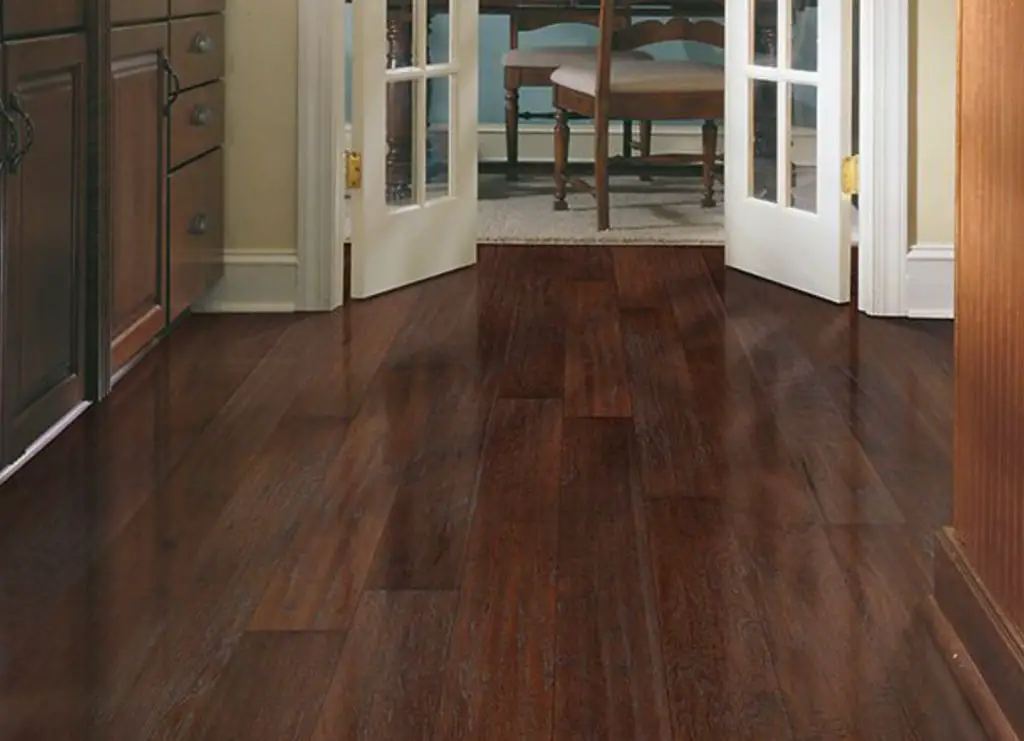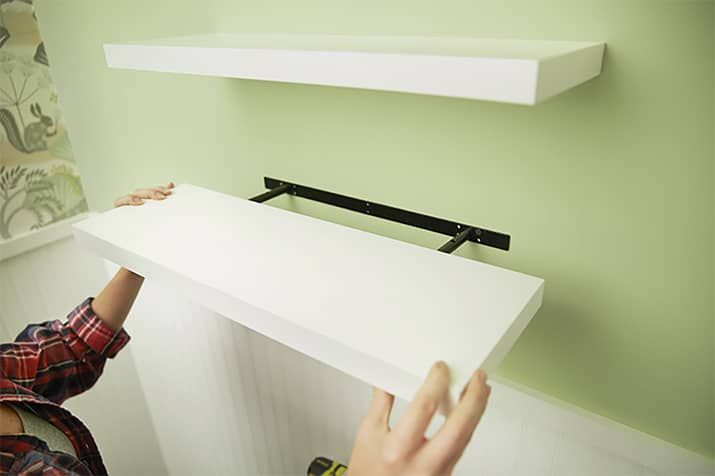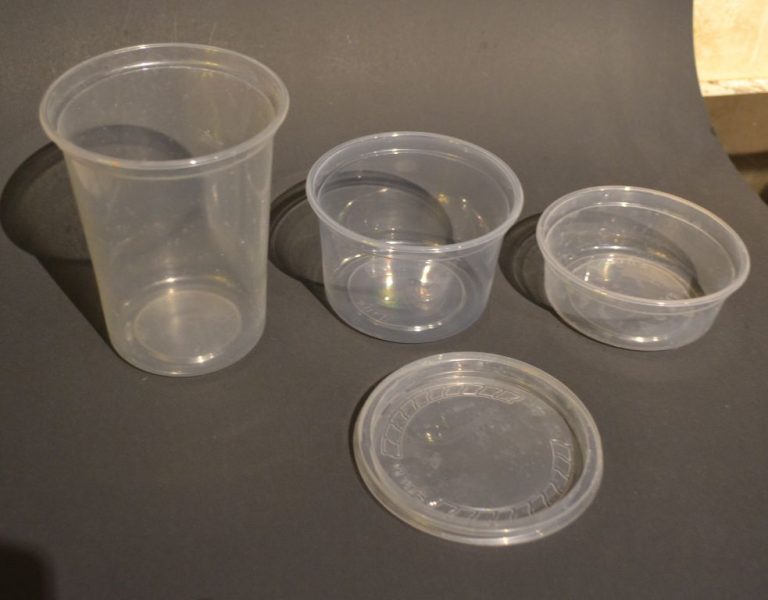What Color Dining Table For Dark Wood Floors?
Choosing the right dining table color for a room with dark wood flooring can be a tricky dilemma. The dark floors make a bold statement and can anchor the aesthetic of the space. However, the wrong dining table color has the potential to clash with the dramatic wood floors. On the other hand, the right dining table color can complement the floors perfectly, pulling the whole room together. The goal is to strike the ideal balance between contrast and cohesion. This article will explore the pros and cons of popular dining table color options for rooms with dark wood floors. With the right guidance, you can feel confident selecting a dining table hue that enhances your space.
Pros and Cons of White
A white dining table can provide a nice contrast against dark wood floors and help brighten up a room (Source). The light color reflects light and creates a fresh, airy feeling. White also looks clean, crisp, and elegant. Its neutral tone allows other furniture and decor to stand out.
However, white shows dirt, dust, and spills easily on a dining table (Source). It requires more frequent cleaning and maintenance to keep looking pristine. The high contrast with dark floors also emphasizes any mess or imperfections. White can sometimes feel sterile or stark if not balanced with other colors and textures.
Pros and Cons of Black
A black dining table can beautifully match dark wood floors, creating a sophisticated, cohesive look throughout the space (source). The dark tones complement each other well. However, pairing a black table with dark floors can also make the room feel heavy and overly saturated in the dark tones. Using black can feel like too much darkness if not balanced properly with sufficient light elements elsewhere in the space, like lighter walls or large windows (source).
Pros and Cons of Gray
Gray is a popular choice for dining tables on dark wood floors because it provides a modern look Pros & Cons of Dark vs Light Hardwood Floors. The neutral gray tone pairs well with both warm and cool colors, making it easy to match with any décor. Gray creates balance by playing off the deep, darker tones of the floors. It is a transitional shade that provides modern appeal. One downside to gray is that certain shades when used in ample lighting can look too washed out or give off an empty, stark feeling. Overall, gray is a versatile neutral choice that works in many styles from contemporary to farmhouse Light vs Dark Flooring.
Pros and Cons of Wood Tone
A wood tone dining table coordinates seamlessly with dark wood floors and provides a cohesive look throughout the space. This is because the tones are an exact match, so the floors and table appear contiguous. However, some may find this color pairing to be overly matchy-matchy. While cohesion is good, too much of the same tone can start to look monotonous. According to https://www.ninahendrick.com/dark-hardwood-floors/, using the exact same wood tone for floors and furniture can make a space feel flat and lack visual interest.
Pros and Cons of Medium Wood
Medium wood tones provide a warm balance between light and dark wood floors. Medium wood floors, such as acacia, hickory, oak, and maple, offer some nice advantages:

- Provide enough contrast against white walls without being too dark and overwhelming.
- Offer versatility in home décor and furniture choices.
- Hide dirt and wear reasonably well.
However, there are some downsides to consider with medium wood tones:
- Limited color contrast can fail to make a dramatic visual statement.
- Scratches and dents can show more than on very dark floors.
- Requires careful décor coordination to avoid a washed-out look.
Overall, medium wood floors present a nice middle ground between light and dark. They lend warm, natural beauty to a home without the extremes of either end of the spectrum. With careful furnishing choices, medium wood floors can be dressed up or down to fit any style.
Pros and Cons of Espresso
Espresso dining tables can add sophisticated drama when paired with dark wood floors, but the deep, nearly black color can also overwhelm a space (source). The richness of an espresso dining table plays well with the depth of dark floors, creating a moody and elegant aesthetic. However, too much espresso can seem dark and heavy, making the room feel closed in and small. Espresso has bold presence and works best in spacious, well-lit rooms that can balance the dramatic tones. When used in moderation, espresso dining tables add stylish impact against dark floors. But take care not to overdo it with this nearly-black shade.
Pros and Cons of Walnut
Walnut flooring has a rich, warm brown color and varying grain patterns that can add stylish elegance to any space with dark wood floors (source). The complex undertones and natural depth of walnut create a luxurious look that pairs beautifully with dark woods. Walnut’s rich hues accentuate other wood tones and provide a graceful complement to existing dark floors.
However, the deep color of walnut does limit the options for lighter accent colors as it can clash with pale tones. Going with too light of an accent color next to walnut flooring can make the space feel disjointed. While walnut offers style, homeowners should be prepared to decorate with darker paint colors, furnishings and decor to complement the dramatic shades of the flooring (source).
Tips for Choosing
When picking the perfect dining table for dark wood floors, it’s important to consider factors like the size of the room, your overall decor style, and lighting. Going too dark with your dining table risks making a space feel smaller and darker. Conversely, an ultra light table paired with dark floors can sometimes look awkward and disjointed.
Aim for a dining table in the medium tone range for dark wood floors. Look for warm grays, medium walnuts, or mid-range wood finishes. This will create a cohesive look that complements the floors nicely. Also factor in the style of your space – a traditional style dining room calls for a classic wooden table, while contemporary spaces can handle lighter modern materials like acrylic or glass.
Proper lighting is also key. Make sure to illuminate the dining space well, as dark floors can absorb light. Layering pendant lights, sconces and ambient lighting prevents shadows and brightens up the room and table area.
With some careful thought about aesthetics, you can select the perfect dining table to pair with your dark wood flooring for a sophisticated, pulled-together look.
Conclusion
To recap, the best dining table colors for dark wood floors are generally light, muted tones like white, gray, medium wood, and lighter wood finishes. These lighter colors complement the rich dark floors beautifully. Darker tables like espresso can sometimes blend in too much or feel heavy. Black can also be tricky as it doesn’t provide enough contrast. The lighter colors like white and gray pop against the dark floors and add an airy, bright feel to balance out the warmth of the wood.
When choosing your dining table, consider the overall style you want to achieve. Lighter farmhouse style pairs well with white or wood tone tables. Modern and contemporary looks can use black or very light woods. Overall, make sure to pick a dining table color that provides enough contrast from the floor to stand out, but doesn’t clash too dramatically. Experiment with wood samples or tablecloths first to find your perfect match!




